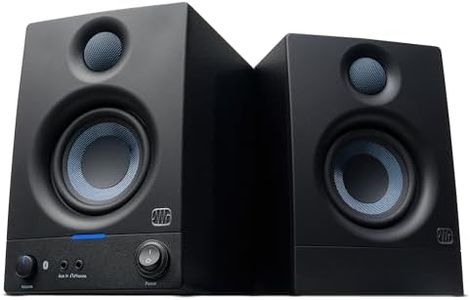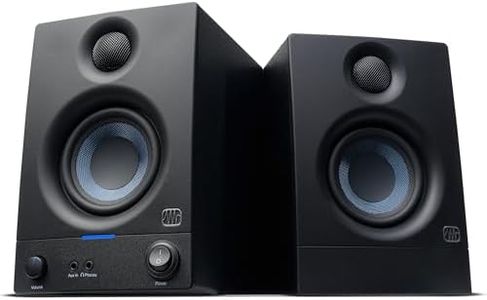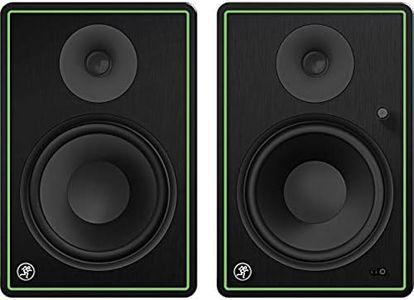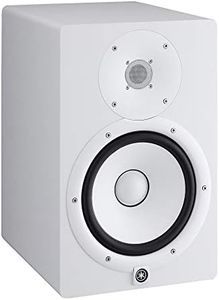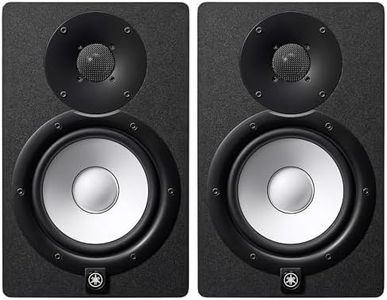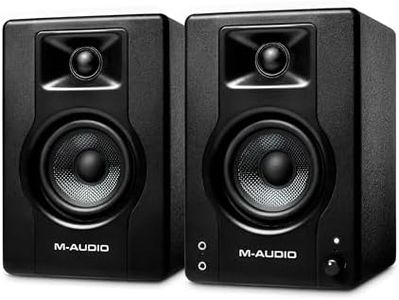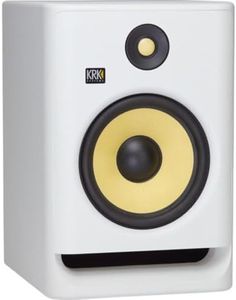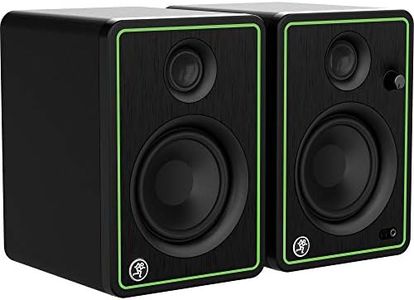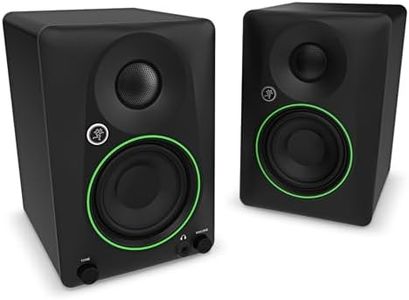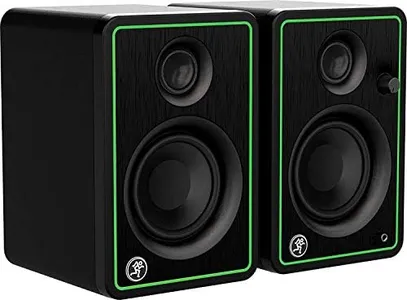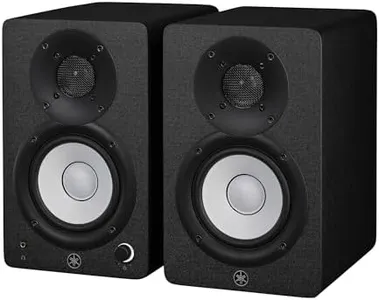10 Best Dj Monitors 2025 in the United States
Our technology thoroughly searches through the online shopping world, reviewing hundreds of sites. We then process and analyze this information, updating in real-time to bring you the latest top-rated products. This way, you always get the best and most current options available.

Our Top Picks
Winner
PreSonus Eris 3.5BT Studio Monitors, Pair — 3.5" Inch Powered Bookshelf Speakers, Stereo Speakers, Desktop Computer Speakers, Near Field Music Production, Audio Mixing Recording
Most important from
175 reviews
The PreSonus Eris 3.5BT Bluetooth Studio Monitors offer a versatile solution for desktop, bookshelf, and DJ setups. These monitors deliver 50W of Class A/B power, ensuring sufficient volume without compromising on tonal balance or audio clarity. The 3.5-inch woven-composite drivers provide a smooth and accurate bass response, while the 1-inch silk-dome tweeters offer a natural high-frequency response. This combination ensures a balanced and clear sound, ideal for multimedia use, gaming, watching movies, or music production.
The Bluetooth 5.0 connectivity allows for high-quality wireless audio streaming, and the variety of input options, including 1/4-inch TRS, RCA, and 1/8-inch aux, ensure compatibility with a wide range of devices. The high and low acoustic tuning controls enable users to customize the sound to their specific room environment, enhancing the listening experience. The built-in headphone amp is a convenient feature for private listening sessions.
The relatively small driver size of 3.5 inches may not provide the same depth and power as larger monitors in more extensive setups or larger rooms. Additionally, while the frequency response goes up to 20kHz, the lower end might not cover the full spectrum required for all types of DJ performances. In conclusion, the PreSonus Eris 3.5BT monitors are best suited for small to medium-sized rooms and nearfield listening environments. They are highly versatile, easy to connect, and offer excellent sound customization, making them a solid choice for home studios, dorm rooms, and multimedia purposes.
Most important from
175 reviews
PreSonus Eris 3.5 Studio Monitors, Pair — Powered, Active Monitor Speakers for Near Field Music Production, Desktop Computer, Hi-Fi Audio
Most important from
845 reviews
The PreSonus Eris 3.5 Studio Monitors are a solid choice for anyone looking to enhance their music production or audio experience, especially in smaller spaces. With a frequency response that reaches up to 20 KHz and a power output of 50 Watts, these monitors deliver clear sound and a surprisingly strong low end thanks to their 3.5-inch woven-composite woofers. This makes them well-suited for nearfield listening, where detailed audio clarity is essential.
One of the standout features is the ultra-wide listening sweet spot, which allows for great stereo imaging from various angles. This is particularly useful if you’re working in a small studio or a desk setup. Additionally, the high and low-frequency tuning controls enable you to adjust the sound to match your room’s acoustics, which adds a personalized touch to your audio experience.
On the connectivity front, the Eris 3.5 offers a variety of options, including balanced TRS inputs and an aux input for easier integration with different devices. The quick-switch headphone output is another practical feature, allowing you to reference your audio directly through headphones without having to unplug anything. These monitors are excellent for multimedia uses, gaming, and studio-quality music production in home or dorm settings. They provide a mix of power, clarity, and versatility that can meet the needs of budding producers or casual listeners alike.
Most important from
845 reviews
Mackie CR8-XBT 8 inch Multimedia Monitors with Bluetooth
Most important from
179 reviews
The Mackie CR8-XBT 8-inch Multimedia Monitors are a strong choice for anyone looking to enhance their audio experience, particularly in home studios or casual listening environments. One of their standout features is the Bluetooth connectivity, allowing for wireless music streaming from smartphones or other devices, which adds convenience for users who prefer a clutter-free setup. The frequency response is impressive, reaching up to 20 kHz, making these monitors suitable for a variety of audio tasks, from music production to casual listening. Their 160 watts of power output ensures they can fill larger rooms with clear sound without distortion.
Another advantage is the all-wood cabinet, which enhances the sound quality by providing a natural sonic character. The included hookup cables and isolation pads are a nice touch, ensuring that you have everything you need to set up your monitors right away.
However, there are a few considerations to keep in mind. Weighing in at 35.2 pounds, these monitors are quite heavy, making them less ideal for portable setups. Additionally, while they excel as multimedia monitors, they might not offer the precision that professional DJs or sound engineers seek in critical listening environments, especially if you're used to nearfield monitors that are designed for closer placement. The Bluetooth range of 10 meters is reasonable, but interference may occur in environments with many wireless devices. The Mackie CR8-XBT is best suited for users who want high-quality, versatile monitors for general use, including music production, podcasting, or simply enjoying music at home. Their combination of power, sound quality, and wireless capabilities makes them a solid option, though potential users should consider their weight and application needs before purchasing.


